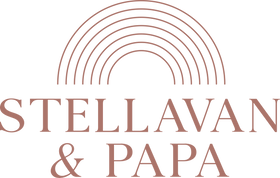
5 Clever Ways to Make Learning Letters Fun for ToddlerS
Let’s be honest—toddlers aren’t sitting down for spelling tests or alphabet drills anytime soon. Their job is play, exploration, and curiosity. So how can we, as parents, sneak a little letter learning into their daily lives without turning it into a chore? The secret lies in one simple truth: make it fun.
Here are five clever, creative, and parent-approved ways to help your little one fall in love with letters, all while playing, giggling, and being their wonderfully messy selves.
1. Alphabet Treasure Hunt
Why it works: Movement + discovery = magic.
Toddlers thrive when learning is tied to their senses. An Alphabet Treasure Hunt brings learning into motion, turning your living room or backyard into a playful classroom.
How to do it:
-
Write or print out large letters and hide them around your house or garden.
-
Give your toddler a basket and tell them they’re going on a treasure hunt.
-
When they find a letter, ask: “What letter is that?” or “What word starts with that sound?”
Make it extra fun:
Use toys or household items that begin with the letter they’ve found—“You found M! M is for monkey—let’s find one!”
💡 Parent tip: Start with the letters in their name to build early recognition and a personal connection.
2. Sensory Letter Play
Why it works: Toddlers learn best through touch and texture.
Introducing letters through sensory experiences is a fantastic way to keep toddlers engaged. The trick is to blend literacy with tactile exploration.
Ideas to try:
-
Letter Tracing in Sand or Salt: Pour a thin layer of sand, salt, or flour on a tray and show your toddler how to “draw” letters with their finger.
-
Playdough Letter Stamps: Use letter-shaped cookie cutters or wooden alphabet blocks to press letters into playdough.
-
Foam Letters in the Bath: Floating alphabet letters make bath time educational and entertaining.
Why it helps: Feeling the shape of a letter helps reinforce how it looks and moves—much more fun than flashcards!
🎉 Bonus: It’s also great for developing fine motor skills and early writing strength.
3. Alphabet Art Projects
Why it works: Creativity meets early literacy.
Arts and crafts offer the perfect excuse to talk about letters without it feeling like a lesson. You don’t need fancy materials—just a little imagination and a willingness to get messy.
Activities to try:
-
Letter Collages: Cut out a giant version of one letter (like “B”) and let your child glue on magazine pictures of things starting with B—bananas, bees, balls.
-
Paint the Alphabet: Write a few letters on paper and let your toddler paint over them with watercolors or finger paint.
-
Sticker Letters: Use alphabet stickers and let your child decorate a page with the letters of their name.
🎨 Pro tip: Choose one letter each week as your “Letter of the Week” and base craft time, snacks, and songs around it.
4. Sing, Dance, and Move with Letters
Why it works: Music and rhythm help boost memory.
Toddlers love to move. Channel that wiggle energy into learning with music and movement.
Try this:
-
The Classic ABC Song: Start with the old favorite, but slow it down so they can hear each letter clearly.
-
Letter Songs on YouTube or Spotify: Try songs like “A is for Apple” or “The Phonics Song” to link letters with sounds.
-
Alphabet Freeze Dance: Play music and dance—when the music stops, hold up a letter and shout it out together!
🎶 Musical twist: Use simple rhythm instruments (like a shaker or tambourine) for added fun and sensory input.
5. Use Toys and Everyday Items to Teach Letters
Why it works: Play is a toddler’s love language.
Learning letters doesn’t have to involve worksheets. Wooden blocks, puzzles, and even kitchen utensils can be used to teach letters casually and effectively.
Fun ways to weave letters into play:
-
Alphabet Puzzles: Choose wooden puzzles that encourage both shape recognition and letter learning.
-
Letter Blocks: Stack them, knock them down, and call out the letters as you go!
-
Label Everything: Stick small labels on toy bins—“Cars,” “Dolls,” “Blocks.” Read them aloud as you tidy up together.
Playroom bonus: Use toys that double as décor, like beautifully crafted wooden letters or puzzles, so your toddler is surrounded by subtle letter prompts every day.
🧸 No pressure: The more your child sees and hears letters in context, the more naturally they'll begin to recognize them—no need for formal instruction at this age.
Keep It Simple, Keep It Joyful
Remember, toddlers don’t need to master the alphabet overnight. At this stage, the goal is exposure, enjoyment, and connection. Celebrate the little wins—recognizing the first letter of their name, singing the ABCs without missing Q, or tracing a wobbly “E” in playdough.
And most of all, celebrate the time you spend together. These early years are as much about building emotional bonds as they are about learning letters.
Final Thought:
If your toddler is having fun, you’re doing it right. Whether you’re on a treasure hunt through your living room or singing about B is for banana in the bathtub, each playful moment is a powerful step toward literacy.
So get silly, get creative, and enjoy this alphabet adventure—one giggle and one letter at a time. 💛
